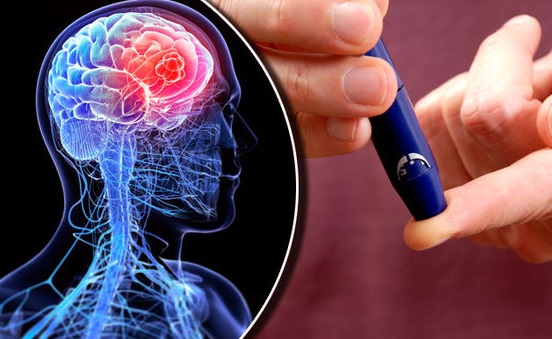Nikhil Prasad Fact checked by:Thailand Medical News Team Jan 11, 2025 3 months, 4 weeks, 1 day, 7 hours, 10 minutes ago
Medical News: Diabetes is a long-term metabolic condition marked by high blood sugar levels, commonly leading to complications in various parts of the body. Among these complications, the effects of diabetes on the brain have recently garnered significant attention. Researchers from the Department of Neural and Behavioral Sciences at Hershey Medical Center and the Department of Microbiology and Immunology at Pennsylvania State University College of Medicine-USA investigated how diabetes alters glial cells in different brain regions. Their groundbreaking study provides valuable insights into how diabetes may contribute to neurological impairments and potential cognitive decline.
 Diabetes Alters Glial Cells in the Brain
Diabetes Alters Glial Cells in the Brain
This
Medical News report delves into the detailed findings of their study, highlighting the significant changes diabetes induces in the brain's cellular and vascular systems.
What Are Glial Cells and Why Do They Matter?
Glial cells are non-neuronal cells in the central nervous system that play essential roles in supporting brain health. Astrocytes, a type of glial cell, help regulate nutrient transport and neurotransmitter function, while microglia act as the brain’s first line of defense against injury or disease. Together, these cells ensure the blood-brain barrier - a crucial system that protects the brain from harmful substances - remains intact.
In diabetes, high blood sugar levels can cause oxidative stress, leading to functional impairments in these glial cells. Researchers have previously observed that diabetic brains are more susceptible to neuronal cell death after injuries like ischemia. The current study explores the baseline activity of astrocytes and microglia and their impact on the blood-brain barrier’s permeability in the diabetic brain.
Study Methodology
The researchers conducted their study on two groups of mice: type-2 diabetic db/db mice and non-diabetic db/+ mice. These mice were observed at 12 weeks of age to assess the baseline differences in glial cell activation and vascular integrity. Brain regions examined included the motor cortex, caudate, and hippocampus, areas associated with motor coordination and memory.
To measure glial cell activation, the researchers used specific markers: GFAP (Glial Fibrillary Acidic Protein) for astrocytes and Iba-1 for microglia. They also performed staining techniques to evaluate blood vessel integrity and the presence of tight junction proteins like occludin, which are critical for maintaining the blood-brain barrier.
Key Findings on Glial Cell Changes
One of the most significant discoveries was the increased activation of astrocytes in the motor cortex and caudate regions of diabetic mice. This heightened activity, marked by elevated GFAP levels, suggests that persistent hyperglycemia triggers a reactive state in astrocytes. However, no significant differences in astrocyte activation were observed in the hippocampus, indicating that some brain regions may be more vulnerable than others.
Microglial activation, measured by Iba
-1 levels, was notably higher in the caudate region of diabetic mice but showed no significant changes in the motor cortex or hippocampus. This uneven activation pattern highlights the complex ways diabetes affects brain regions differently.
Impact on Blood-Brain Barrier
The study found alarming signs of vascular damage in diabetic mice. Blood vessels in the motor cortex and caudate exhibited leakage of serum IgG, a protein that should not cross an intact blood-brain barrier. This leakage indicates that diabetes compromises the barrier’s protective function.
Further investigation revealed a loss of tight junction proteins, particularly occludin, in these brain regions. Tight junction proteins are vital for maintaining the integrity of blood vessels. Their reduced presence in diabetic mice underscores the link between diabetes and increased blood-brain barrier permeability.
Implications of These Findings
The heightened glial cell activity and compromised vascular integrity in diabetic brains suggest that chronic hyperglycemia creates an environment of subclinical inflammation. This inflammatory state not only weakens the brain’s defenses but also makes it more susceptible to neuronal cell death and cognitive impairments.
These findings provide critical insights into why individuals with diabetes face a higher risk of developing neurological and neurodegenerative conditions, including Alzheimer’s disease. The study also raises concerns about the brain’s ability to recover from injuries like strokes in diabetic patients.
Concluding Remarks
The research conducted by experts from Hershey Medical Center and Pennsylvania State University College of Medicine underscores the profound impact diabetes has on the brain’s cellular and vascular systems. Persistent hyperglycemia appears to drive glial cells into a reactive state, leading to a weakened blood-brain barrier and increased vulnerability to neuronal damage. These findings highlight the importance of managing blood sugar levels not just for overall health but specifically for protecting brain function.
In conclusion, this study illuminates the need for further research into targeted therapies that address the unique challenges diabetes poses to brain health. By understanding and mitigating these effects, it may be possible to improve the quality of life for individuals with diabetes and reduce the prevalence of associated neurological conditions.
The study findings were published on a preprint server and are currently being peer reviewed.
https://www.preprints.org/manuscript/202501.0744/v1
For the latest on Diabetes, keep on logging to Thailand
Medical News.
Read Also:
https://www.thailandmedical.news/news/cilostazol-mitigates-diabetes-induced-neuropathy-and-peripheral-arterial-disease
https://www.thailandmedical.news/news/review-of-various-randomized-clinical-trials-shows-that-curcumin-can-help-in-diabetes-management
https://www.thailandmedical.news/articles/diabetes
